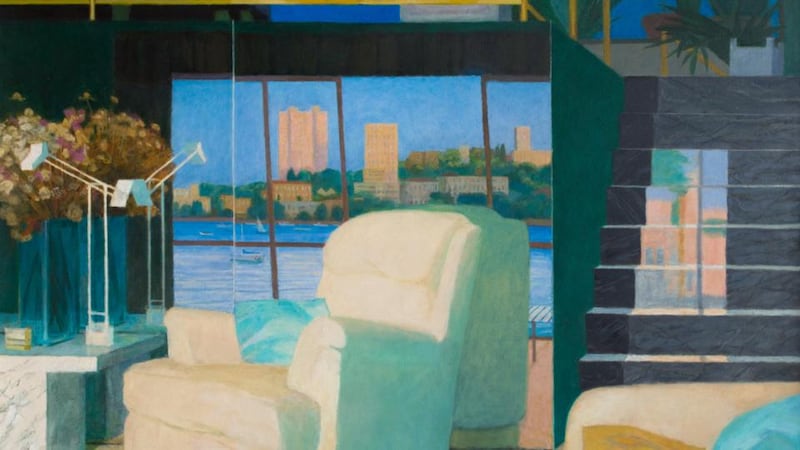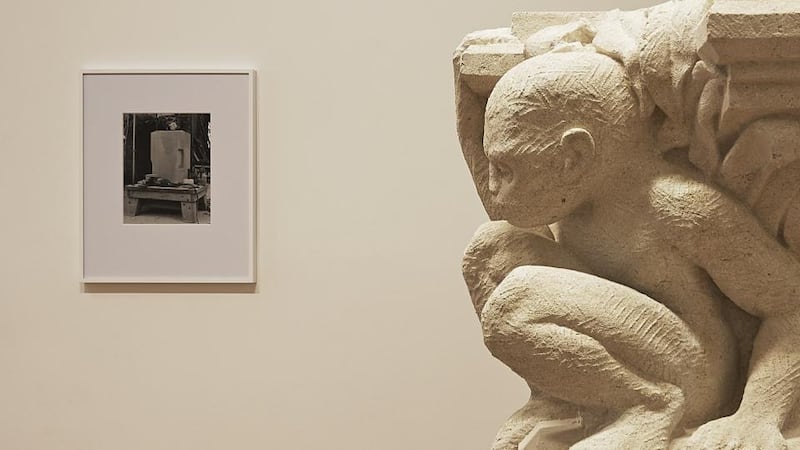Institutional critique has been a significant strand of contemporary art practice since the 1960s. There’s an element of biting the hand that feeds you involved in artists challenging the museums and galleries showing their work. There have been some tensions and difficulties, but by and large institutions and curators have been happy enough to play devil’s advocate in questioning their own values and methods.
The notion of an artwork challenging the notion of art, exhibitions and institutions has even become a rhetorical cliche. It flatters institution, curator and artist with its notionally radical, edgy implications, but doesn’t threaten the status quo, partly because it’s often couched in impenetrable artspeak. Which is not to doubt the validity of institutional critique, or the sincerity of many artists who see it as central to their concerns.
From the latter part of 2012 into 2014, Michael Dempsey and Logan Sisley of Dublin's Hugh Lane Gallery set up an artistic-curatorial experiment, Sleepwalkers, inviting several artists with established track records in critique projects to make exhibitions composed of ideas and objects "which were not yet considered to be artworks", and which addressed two simple questions: "What is an exhibition?" and "How does the form of an exhibition come into being?" The first question is simple, but the second complicates things a lot.


The results were varied. In his Bubble Wrap Game, Jim Ricks played out a curatorial process of selection and validation, making a museum within the museum comprising works from the real collection, artworks borrowed from elsewhere, non-art objects from flea markets and a commissioned copy of an Ed Ruscha painting. There was an invitation here for the visitor to consider how institutions make their judgments and settle on their art historical narratives and hierarchies of taste.
More obliquely, Sean Lynch installed A Blow-by-Blow Account of Stone Carving in Oxford, a research project including a specially commissioned carving by Stephen Burke. It was carried out in the manner of the 19th-century Irish stone carvers John and James O'Shea. Lynch explored the popular story that the O'Sheas had, provocatively, "carved a rendition of Darwin's theory of evolution" in the figures they made for the New Museum of Natural History, Oxford. What's beyond doubt is that the O'Sheas did engage in their own form of institutional critique, lampooning the authorities they had to deal with as "parrots and owls" in stone.
For her contribution, Clodagh Emoe set up a lecture by Simon Critchley on the writings of 14th-century mystic Marguerite Porete, not in the gallery but, atmospherically, at Glendalough, by night. Gavin Murphy engaged most directly with the Hugh Lane and its histories, detailing and responding in text to specific works and events. Lee Welch gave Gallery 8 an impromptu decorative makeover and organised various events, from tai chi workshops and a fashion shoot to a concert paying tribute to the avowedly amateur Portsmouth Sinfonia.
In the meantime, with Ridinghouse, The Hugh Lane has produced a publication on the project. It gathers together documentation, curatorial essays and a section from the revised edition of art dealer, writer and publisher Karsten Schubert's critical history of art museums, The Curator's Egg. Ridinghouse is Schubert's imprint, and his book was a major inspiration for Sleepwalkers.
His text, Democracy of Spectacle: The Museum Revisited is the most cogently argued contribution to the publication. In it he bemoans the rise of the starchitect museum and the relentless dumbing down of museological culture in pursuit of the mass audience. He has a go at a few contemporary art stars as well as architects in the process. He feels that museums have reneged on their responsibility to their collections. He quotes the academic Lisa Jardine, when she was a trustee of the V&A, as justifying their Kylie Minogue exhibition by saying: "It is certainly not our job to be elitist." On the contrary, he argues, it is precisely the museum's job to be elitist: "to be elitist for everybody".
His refreshing analysis makes sense in the context of many high-profile museums worldwide. Less so, perhaps, in Ireland, where we have not yet witnessed the invasion of the commercially driven, mass-market art exhibition. That is something that some curators would welcome.
Sleepwalkers (Dublin City Gallery, The Hugh Lane and Ridinghouse) is available at The Hugh Lane Gallery, Dublin, for €10
A Life Together in Art
Paintings by the late Campbell Bruce, selected by Jacqueline Stanley
Origin Gallery, Dublin
****
It's sad to see the Origin Gallery's tribute to the late Campbell Bruce, who died last year. The show includes a range of work by his partner, Jacqueline Stanley. As an artist, she is the better-known of the pair, a gifted draughtswoman who exhibits her immensely capable work regularly. He showed much less frequently, and his output was slow and relatively sparse, but he was a fine, thoughtful painter of interiors and landscapes.
He approached each composition as if there was all the time in the world to tease out the rhythmic play of light across a complex scene. Tone and colour are impeccably well judged, but light was at the heart of everything he did. The result in each case is a beautifully serene, unhurried view, whether of the interior of his house in Sandymount, the coastal landscape of west Cork, or Sydney Harbour. Until March 10th


